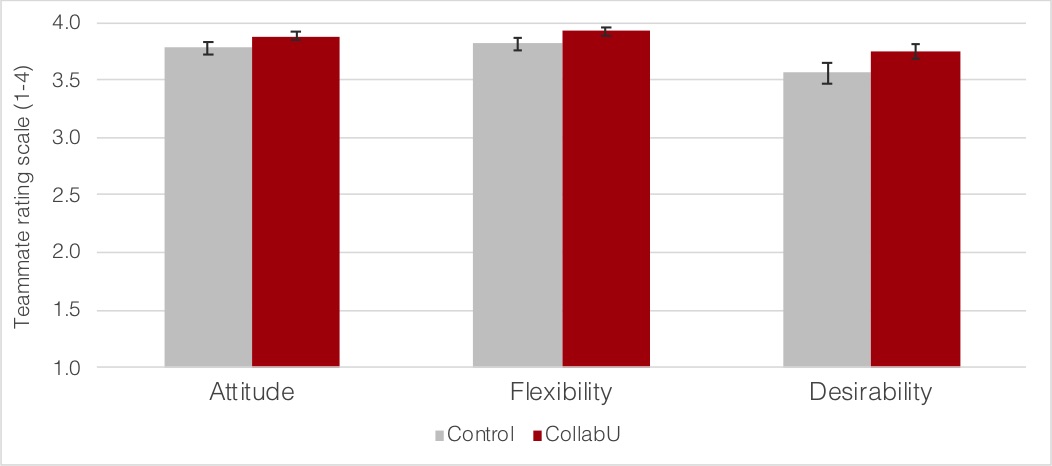Can Online Modules Teach Teamwork and Improve Collaboration?
Practicing team skills in the online modules increased students’ understanding of teamwork and enhanced their collaborative experience. |
EUREKA! Discovery and Its Impact
Collaboration and teamwork are critical skills in today’s workplace, although teaching them remains a challenge. To address this challenge, Harty and colleagues developed Collaborative U, a set of online modules designed to teach teamwork and enhance team performance. They investigated the impacts of these modules across thirteen sections of a Mellon College of Science first-year seminar were randomly assigned to one of two conditions. Seven sections completed Collaborative U modules, and six others completed “control” modules that targeted visual design instead of collaboration. Format and duration of modules were similar across conditions. A scenario-based, content knowledge test, administered before and after each condition, assessed student learning regarding productive collaboration practices. Multiple times during the semester, students also rated their group members on 10 attributes indicative of an effective collaborator.
Controlling for pre-test performance, students in the Collaborative U condition scored significantly higher on the post-test compared to those in the control condition (Figure 1). Students in the Collaborative U condition also rated their teammates significantly higher on the following three attributes: having a positive attitude, being flexible, and desirability as a team member (Figure 2). These results suggest that a relatively short set of online instructional modules on collaboration can improve team members' knowledge of productive collaborative practices and their perceptions of each other’s’ qualities as teammates.

Controlling for pre-test performance, students in the Collaborative U condition performed significantly better on a content knowledge post-test (M = 32.50, SE = 1.90) compared to those in the control condition (M = 17.40, SE = 2.10). Error bars are the 95% confidence intervals for the estimated marginal means. The difference between the estimated marginal means was 15.1, which was statistically significant, 95% CI [9.5, 20.7], F (1,210) = 27.94, p < .001, ηp2 = .12.

Averaging across multiple time points, students in the Collaborative U condition received significantly higher peer ratings than students in the control condition for the following attributes (Bonferroni corrected):
Positive attitude: t (217) = 3.02, p < .01.
Flexibility: t (217) = 3.67, p < .01.
Desirability as a team member: t (217) = 3.33, p < .01.
Filters in which this Teaching as Research project appears:
College: Mellon College of Science
Course Level: Intro Undergraduate
Course Size: Large (more than 50 students)
Technology Enhanced Learning
